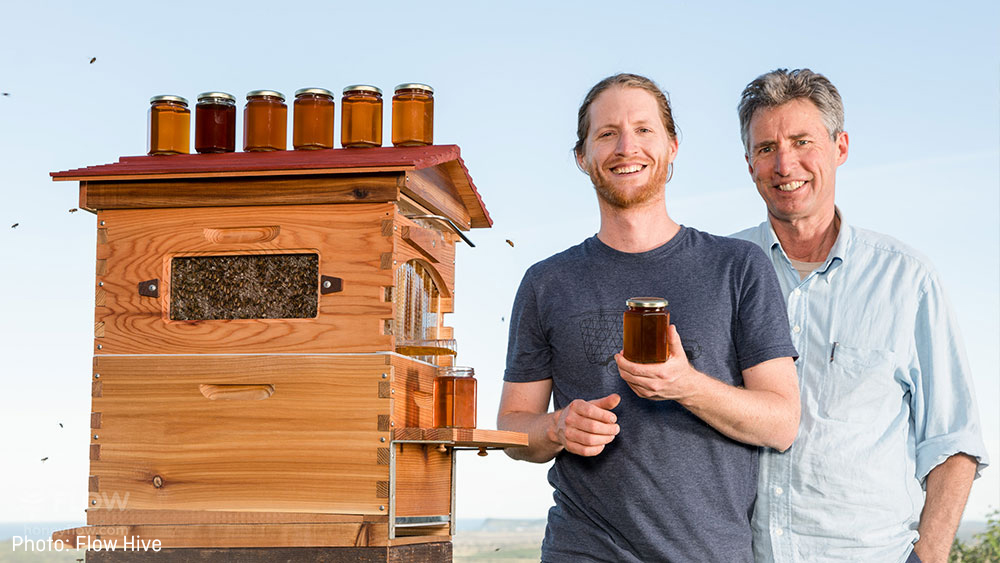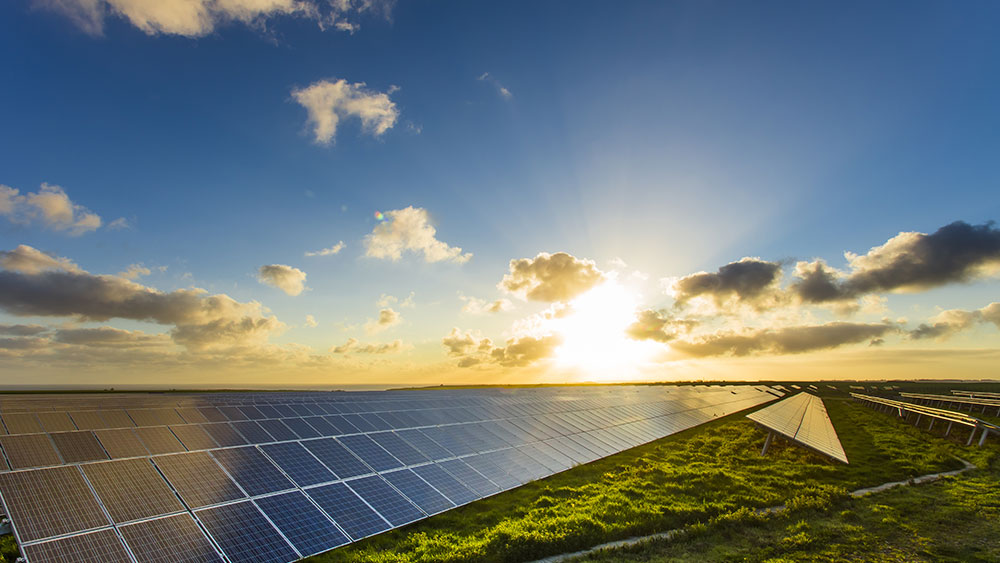It pays to be prepared. When it comes to crowdfunding, there is no such thing as an overnight success story.
Stu Anderson is a hobby beekeeper from the Northern Rivers region in New South Wales who, in 2015, ran a record-breaking crowdfunding campaign with his son Cedar to launch Flow Hive, a honey harvesting system they had invented.
His advice to entrepreneurs who want to launch a crowd-sourced funding (CSF) campaign is to allow for six-months’ planning – at least. “If you go in unprepared, you’ll have a failure on your hands.”

In recent history, entrepreneurs looking for seed capital have congregated in large numbers in places like Silicon Valley in search of the ultimate prize of VC investment. In this competitive environment, success often relies on access to exclusive networks rather than a concept’s merit.
Crowdfunding has emerged as an alternative source of funding that is open to anyone, regardless of geography or connections. “Crowdfunding appears to be democratising access to capital among a larger pool of innovators,” Vanessa Assenova, a professor in management at Wharton, says in an episode of the Knowledge@Wharton podcast.
“If you have a great idea, going on a platform like Kickstarter can give you great visibility — not just among the crowd and the backers who can identify and screen these potential ideas, but your success on one of these platforms can subsequently attract venture capitalists to your area and to your types of projects and ideas.”

New to the world of start-ups, Stu and Cedar Anderson spent a year researching, planning and implementing the Flow Hive CSF campaign (add hyperlink to flow hive). An important development was the release of a teaser video a week before launch. Picked up and shared amongst a global audience passionate about bee conservation, the video went viral.
It was a foretaste of what was to come, highlighting how a highly engaged community can drive innovation and entrepreneurship. In February 2015, Stu and Cedar launched their campaign. They smashed through their $70,000 goal within minutes and reached both the $1 million and $2 million marks in record time. At the campaign’s close, they had raised US$13 million – Indiegogo’s most successful campaign ever.
Suddenly, Flow Hive had 20,000 prepaid orders to be manufactured and shipped to 130 countries. “It rocketed us into business in a way we didn’t expect,” says Stu. Having prepaid orders was an “incredible advantage” that allowed the Andersons to invest in infrastructure and pay both suppliers and manufacturers up front. In 2018, a second funding round raised another US$14.9 million.

Skilling up
“Empowerment doesn’t come from handing people a tool, it comes from teaching them how to use that tool successfully,” says Tom Dawkins, CEO of StartSomeGood, a crowdfunding platform designed to connect innovation with capital to create social change.
“Crowdfunding is an incredibly powerful tool to build communities and raise funds, but people don’t wake up in the morning and intuitively know how to construct stories for people and design outreach strategies and how to do marketing and sales and all the things that are involved in raising money,” he says.
“Now, more than ever, we need an innovation eco-system that is constantly running experiments to keep pace with our ever-changing world.”
Tom Dawkins, CEO at StartSomeGood

Dawkins founded StartSomeGood in 2012, inspired by the way Kickstarter allows creatives to bypass traditional cultural gatekeepers like record executives and funding bodies to develop projects. He wanted to offer social entrepreneurs striving to have a positive impact on the world the same opportunity to pitch ideas directly to the communities who care about what they are doing. Today, StartSomeGood works “with a lot of corporates, foundations, and governments to run programs that inspire, unearth, skill-up and launch innovative projects,” says Dawkins. “Doing that through a crowdfunding model helps de-risk those early-stage investments, because when someone is able to go out there, pitch their idea and raise money from the community, it demonstrates that the community is interested and supportive of what they’re creating.”

Now, more than ever, he says, we need an innovation eco-system that is constantly running experiments to keep pace with our ever-changing world, but the traditional funding system has been reluctant to invest in totally new ideas that have no guarantee of success. Like elusive angel investors, crowdfunding provides “risk-tolerant capital” to these projects that would otherwise never get off the ground.
Dawkins argues that crowdfunding is essentially an outreach activity that offers entrepreneurs a completely new way to connect directly to a pool of engaged investors. “The people who succeed understand that the platform is a tool that they’re using to raise money – not the source of money, and they have to use those tools and go out there and sell their project, pitch themselves and build a community,” he says. “Your story is only as useful as your ability to pair it with the right audience.”

On target
When DC Power Co launched its equity crowdfunding campaign in February 2018, chairman Nic Frances Gilley had a specific market in mind: the two million Australian households with rooftop solar panels that were being underserved by the current energy model that caters for the eight million that don’t.
Gilley and his co-founders set out to disrupt the current energy retail model, creating a much-needed alternative that better serves solar users and, crucially, reduces their bills.
For a small monthly fee, DC Power Co offers consumers wholesale pricing when they buy or sell energy, as well as system and performance updates, assistance with maintenance, and benchmarking. Importantly, the business is owned by its customers through the equity crowd-sourced funding campaign. “It allows us to be in the same space as them,” he says. “When I’m considering the needs of my business, I’m also considering the needs of my consumers.”

Part of the growing movement of smaller, community-based start-ups tackling real world problems for local communities, DC Power Co raised $2.2 million from 12,500 investors in its first round of funding. “That was our seed capital to get the company going,” says Gilley.
It was considerably less than the campaign’s $5 million target, he concedes, but “it was successful in the sense that we built an extraordinary base of people, 10,000 of them who have solar, who have put money on the line to say we will help you build this business.”
Crowdfunding allowed DC Power Co to create a community of highly engaged investors committed to participating in the company’s growth. “It’s not about the money, it’s that each customer has a stake,” says Gilley.
Tips to entrepreneurs planning a crowdfunding campaign:
- Do plenty of research, attend workshops and seminars, and talk to other entrepreneurs to increase your expertise. Allow at least six months to plan and execute your campaign.
- Identify your target market and focus your crowdfunding pitch on that audience. Be intentional, says Dawkins. “Not everyone cares equally about everything.”
- Stay true to your original vision. “Don’t let thoughts of money get in the way of what you’re trying to do, and that is promote what you’ve developed,” says Stu Anderson.
This article was created by BBC StoryWorks, the BBC’s global commercial content division, on behalf of OFX.
Where The World’s Moving
Welcome to the Where the World’s Moving content series that celebrates what it means to be a global citizen told through the eyes of the people that are living and breathing this ethos every day. Go to Hub
IMPORTANT: The contents of this blog do not constitute financial advice and are provided for general information purposes only without taking into account the investment objectives, financial situation and particular needs of any particular person. OzForex Limited (trading as OFX) and its affiliated entities make no recommendation as to the merits of any financial strategy or product referred to in the blog. OFX makes no warranty, express or implied, concerning the suitability, completeness, quality or exactness of the information and models provided in this blog.


